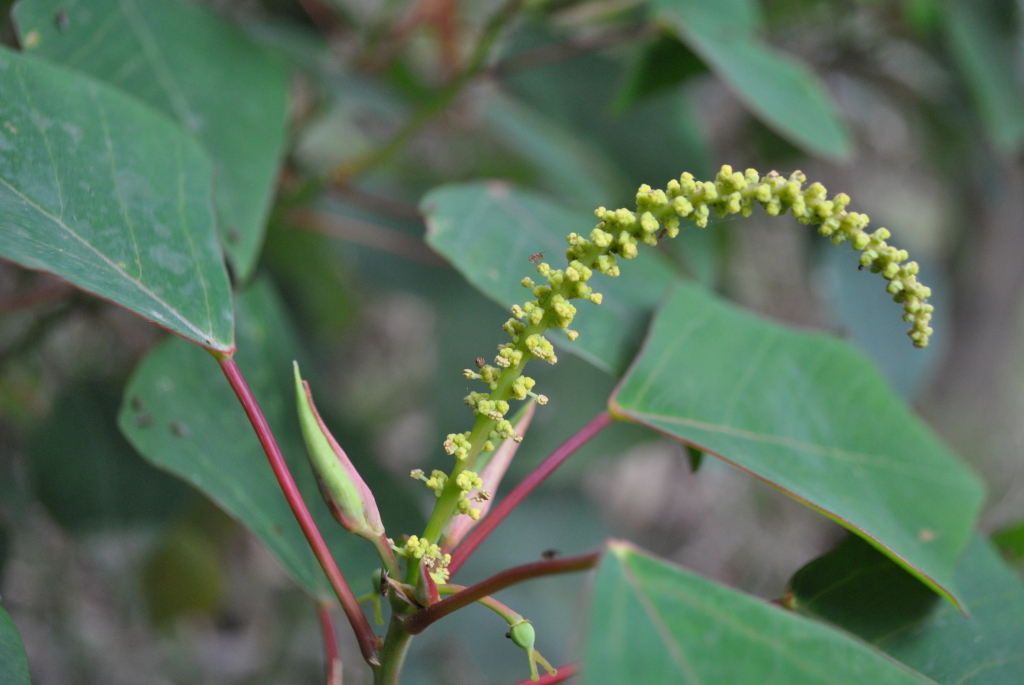Homalanthus
Shrubs or trees, monoecious, glabrous, or with uniseriate, multicellular, pale to brownish hairs. Leaves alternate, simple, margin entire or shallowly and remotely crenate, petiolate; stipules present, 0.5–12 cm long, caducous. Inflorescences terminal, elongate thyrses, bracteate; bracts glandular, basal ones caducous, with a female flower or, rarely with a female flower and few male flowers, distal ones persistent, with 1–3(–8) male flowers in short cymes. Male flowers pedicellate; sepals 2; petals absent; stamens 4–30, anthers 2-celled, dehiscing longitudinally. Female flowers pedicellate, sepals 1–3; petals absent; ovary 2- or 3-celled, glabrous or papillate to puberulous, ovules 1 per cell, style 1, short, not elongating significantly after fertilization; stigma undivided or divided, usually glandular. Fruit a woody schizocarp; seeds 2 or 3, elliptic, usually irregularly foveolate and flattened; caruncle partly or completely covering seed.
About 22 species from Taiwan and Thailand through Malesia to Australia, New Zealand and the Pacific Islands; 3 species in Australia.
Homalanthus was previously spelt Omalanthus.
 Spinning
Spinning


